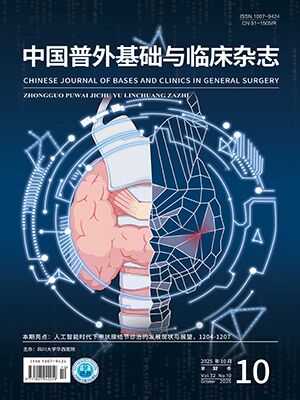| 1. |
Wassenaar EB, Schoenmaeckers EJ, Raymakers JT, et al. Recur-rences after laparoscopic repair of ventral and incisional hernia:lessons learned from 505 repairs[J]. Surg Endosc, 2009, 23(4):825-832.
|
| 2. |
Bansal VK, Misra MC, Kumar S, et al. A prospective randomizedstudy comparing suture mesh fixation versus tacker mesh fixation for laparoscopic repair of incisional and ventral hernias[J]. Surg Endosc, 2011, 25(5):1431-1438.
|
| 3. |
Baccari P, Nifosi J, Ghirardelli L, et al. Laparoscopic incisional and ventral hernia repair without sutures:a single-center experience with 200 cases[J]. J Laparoendosc Adv Surg Tech A, 2009, 19(2):175-179.
|
| 4. |
Bansal VK, Misra MC, Babu D, et al. Comparison of long-term outcome and quality of life after laparoscopic repair of incisional and ventral hernias with suture fixation with and without tacks:a prospective, randomized, controlled study[J]. Surg Endosc, 2012, 26(12):3476-3485.
|
| 5. |
Brill JB, Turner PL. Long-term outcomes with transfascial suturesversus tacks in laparoscopic ventral hernia repair:a review[J]. Am J Surg, 2011, 77(4):458-465.
|
| 6. |
Sajid MS, Parampalli U, McFall MR. A meta-analysis comparingtacker mesh fixation with suture mesh fixation in laparoscopicincisional and ventral hernia repair[J]. Hernia, 2013, 17(2):159-166.
|
| 7. |
Griniatsos J, Yiannakopoulou E, Eugenia Y, et al. A hybrid technique for recurrent incisional hernia repair[J]. Surg LaparoscEndosc Percutan Tech, 2009, 19(5):177-180.
|
| 8. |
Low JB, Garza JR, Bowman JL, et al. Endoscopically assisted “components separation” for closure of abdominal wall defects[J]. Plast Reconstr Surg, 2000, 105(2):720-729.
|
| 9. |
Sharma A, Mehrotra M, Khullar R, et al. Limited-conversion technique:a safe and viable alternative to conversion in laparoscopic ventral/incisional hernia repair[J]. Hernia, 2008, 12(4):367-371.
|




